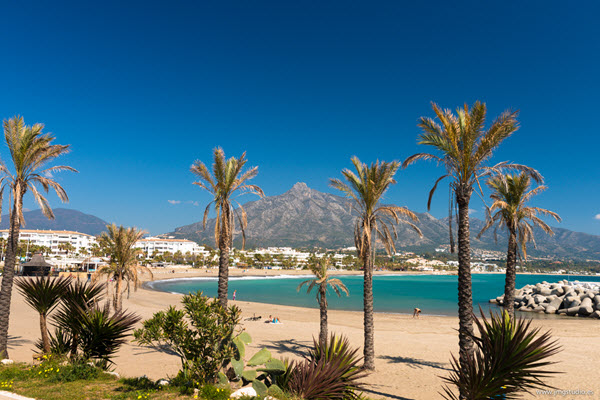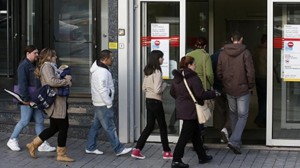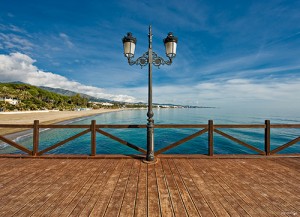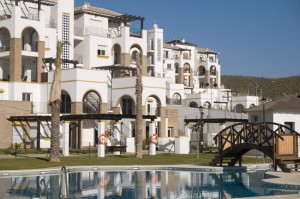
Spain is set fair for a solid 2015, washing away many of the myths associated to it
If your New Year’s resolution is to no longer believe everything you read on the Internet, then you’re in luck (yes, I spot the irony here too, but bear with me) because 2015 is the year in which these tired old myths about Spain can finally be laid to rest…
Myth 1: The economy is in the doldrums
You have to search a little deeper than the tabloid media to get the lowdown on just how well the Spanish economy performed in 2014, and just how positive things look for 2015. Yes, Spain was hit harder than most during the economic bust that ravaged most of Europe between 2008 and 2012, with thousands of young Spaniards upping sticks to try their luck in the UK, Germany and Scandinavia.
Many have yet to return home, but those that have are finding that
employment prospects in Spain are rosier than they have been for nearly a decade. Since emerging from its second recession in five years halfway through 2013, Spain has
enjoyed nearly uninterrupted growth.

Unemployment remains high, but the dole queues are shrinking
The country’s Labour Ministry has released figures that show that Spain’s GDP has grown a further 0.5 per cent in the last quarter of 2014, taking annual growth to nearly two per cent. In 2015, most experts predict Spain to post growth in excess of two per cent, with unemployment figures also set to continue the trend that has seen the number fall for five consecutive months. In 2014, more than 250,000 people were taken off the dole queue, with half a million jobs created in the past two years. Compare that to the period between 2008 and 2012 – when more than three million jobs were lost – and it is clear that Spain’s economy has – decidedly – turned a corner.
Myth 2: People are fleeing the country in their droves
It was reported with some glee last Spring that as many as 90,000 Brits had decided to leave Spain and return to the UK in the space of 12 short months. The usual lines were trotted out by the mainstream media: threats of property demolitions, no chance of a job, boredom, low wages etc., and while it was indeed true that the number of British expats fell more sharply during that period than it had for more than five years, the actual decrease did not represent the mass exodus that was reported.

The beauty of Spain lies in its diversity, climate and excellent infrastructure
Walk the tree-lined streets of the
Costa del Sol today and it quickly becomes evident that it is not just the Brits, but also
the Irish, Germans, French, Danish, Swedish, Russians and many other nationalities that continue to view the region as a fine place in which to live.
Indeed, figures released at the end of 2014 by the
Spanish National Institute of Statistics (INE) showed that Spain’s population had begun to decrease at its slowest pace for almost two years at the end of last year. Emigrants leaving Spain fell by 21 per cent in the last six months of 2014, while immigration into the country was up by
two per cent – a figure that
included many Brits and a large portion of returning Spaniards. Overall, Spain experienced a net departure rate of 50,426 people last year – which is nothing like the mass exodus people had been led to believe.
Myth 3: Property is going to get a lot cheaper
There are many ways to rank property prices. The Organization for Economic Cooperation and Development (OECD) recently ranked property in terms of affordability relative to local wages for each of the 34 nations in the OECD. Spain came out in tenth place, ahead of Italy and France, but below countries such as Greece, Portugal and the USA. This is all relative – the average wage in the USA is wildly skewed by the handful of supremely high-earners, making homes there appear affordable for the majority. Not so.

Spanish property prices have stabilised and are set to rise by around 1.15% this year
In Spain, which has a slightly-above average wage across the OECD, property is still largely affordable for local earners. And this is the key point: now that
local Spaniards can now once again afford to buy property in the country, prices are unlikely to fall much further.
Domestic demand is the lifeblood for any property industry. If the locals cannot buy, market pressures drive down the price until they can.
This is what happened to Spanish property between 2008 and 2012, but the wider economic recovery has helped stabilise Spanish property at
an affordable level. What’s more, for
British buyers armed with the strong pound and earning UK-level wages, the Spanish property market is once again the place to head to for affordable, good quality homes in desirable locations, blessed with
excellent infrastructure, a transparent legal process, good access and masses of choice.




 en
en



 Vlaams-Nederlands
Vlaams-Nederlands
13 Comments
Leave a Comment
DISCLAIMER
The opinions and comments expressed by contributors to this Blog are theirs alone and do not necessarily reflect the views of VIVA Homes Under the Sun Ltd, any of its associated companies, or employees; nor is VIVA to be held responsible or accountable for the accuracy of any of the information supplied.
geoff crossJanuary 16, 2015 at 3:12 pm
What is the prospect for receiving brirish tv in andalucia
Carolyn MowlemJanuary 16, 2015 at 5:27 pm
Michael WhiteJanuary 23, 2015 at 12:14 am
Carolyn MowlemJanuary 14, 2015 at 12:19 pm
Hi Mike Noble, Thank you for your comments. However, we are unable to post anyone’s comments without a valid / functioning return email address, since for legal reasons we have to ensure that anything we post on the blog is attributable to an identifiable source. Best regards.
Michael WhiteJanuary 11, 2015 at 12:50 pm
Fantastic and encouraging article for a move to what is deemed Prosperous and “moving forward” economy
michael garciaJanuary 11, 2015 at 11:50 am
the re taxing to property values seems unfair and when you have purchased a property they come back for more tax
this is putting me off buying
Steve CooperJanuary 11, 2015 at 6:41 am
I would be interested in your comments on this article published in the daily Mail this week.
http://www.dailymail.co.uk/money/mortgageshome/article-2899519/Why-cut-price-Spanish-villa-nasty-tax-surprise.html
Ian CloverJanuary 12, 2015 at 3:41 pm
Have you got something to say?